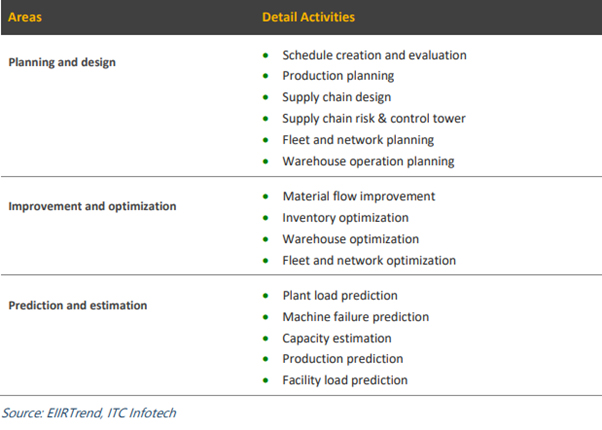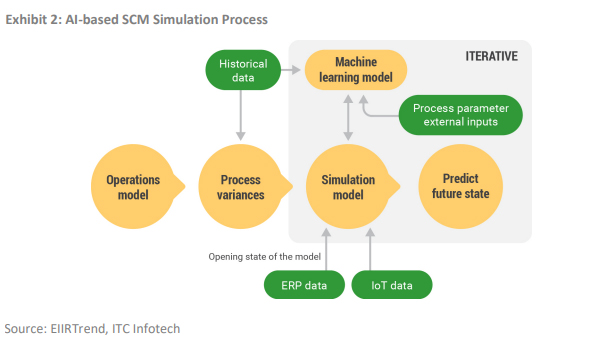One thing is certain in business that it is full of uncertainties. How can enterprises plan their operations and supply chain in case of uncertainties?
Earlier, enterprises would use optimization methods, but, in the face of uncertainties, they aren’t always useful. Here, integrating artificial intelligence (AI) with simulation can help. This PoV discusses how AI-based simulation can help enterprises navigate SCM uncertainties and provides some examples. Link : Download
Enterprises face different types of demand and supply uncertainties while doing supply chain planning, improvement, and prediction
Enterprises need to plan many supply chain activities and make many decisions. Some of these activities are:

The planning of the above activities is a complex process because enterprises face different types of demand and supply uncertainties. These uncertainties are:
Dynamic changes: Often, there are sudden changes in demand and supply due to external factors such as geopolitics, epidemics, natural calamities, terrorism, civil unrest, regulations, economic changes, technological advances, etc. Demand is also impacted by sudden product recalls and external factors related to customers and competitors. Similarly, supply is impacted by factors related to suppliers and labor. Enterprises cannot be prepared for all external events, but should have the agility to react quickly. This is possible only when one has thought of all the scenarios and potential mitigation options.
Interdependency and Complexity: Supply chains are so interdependent and complex now that even a small event can have a cascading impact on the whole supply chain. There is a need to understand this web of complexity and interdependency to plan properly. What could be a better way than to run different simulations and understand the relationships and their impact?
Bottlenecks: Temporary bottlenecks frequently appear in different nodes or locations in supply chains because of external or internal factors, and they create uncertainties across the supply chain. For stable operations, we assume that processes are under control. In real life, however, there are always minor or major variations that create small or large bottlenecks temporarily. These variationscreate uncertainties across supply chains.
Due to these uncertainties, supply chain planning by optimization techniques is tough because these techniques often do not produce optimum or realistic solutions in a timely fashion. One of the reasons for the ineffectiveness of optimization techniques in a real life scenario is that they are rule-based, and in real life, rules are often violated. The other reason is that it takes a lot of time to simulate permutations and combinations of multiple scenarios with hundreds of variables. Hence, modeling of real life is required where AI-based simulations can help. Such simulations can assist in navigating the above uncertainties while planning supply chain activities.
AI-based simulation process, examples, and selection of simulation partners
The AI-based simulation process is a four-step process consisting of operations model, process variance, simulation model, and prediction. The simulation model can be made faster and more realistic by integrating it with iterative machine learning models that can learn from past data quickly. There are many stages and many model possibilities or options in simulation. AI or machine learning is used to predict or decide the most relevant system state at each stage. This AI-based model state selection helps improve speed, accuracy, and applicability of the simulation.






 Pareekh Jain
Founder of Pareekh Consulting & EIIRTrends
Pareekh Jain
Founder of Pareekh Consulting & EIIRTrends